Industrial Noise: What Is It and How to Control It?
Industrial noise - also known as industrial noise pollution - refers to unwanted or excessive sound produced by industrial activities and processes. It is a type of environmental noise originating from various industrial sources such as factories, manufacturing sites, construction sites, energy production facilities, and transportation hubs (such as airports and ports).
Contact our experts to reduce industrial noiseIndustrial noise is primarily a byproduct of the machinery, equipment, and processes utilized in these industries.
The main characteristics of industrial noise are as follows:
Sound Intensity: Industrial environments can produce high levels of noise due to the presence of machinery, engines, and heavy equipment. The noise can be loud enough to cause hearing damage if not properly controlled.
Frequency: The range of frequencies in industrial noise can vary, but it often includes components of both low and high frequency, depending on the sources.
Duration: Industrial noise can be continuous or intermittent, depending on the specific processes and activities underway.
Impact: Excessive industrial noise can have negative effects on the health and well-being of workers and nearby residents. Prolonged exposure to high levels of industrial noise can lead to hearing loss, stress, sleep disturbances, and other health issues.
Regulation: Many countries have established regulations to limit industrial noise and protect the environment and public health. These regulations may include setting permissible noise levels, requiring the use of industrial soundproofing technologies, implementing zoning restrictions, and conducting regular noise assessments.
Efforts to control industrial noise include the use of soundproofing materials such as soundproof blankets and panels, the implementation of technical controls to reduce noise at the source, equipment maintenance to minimize sound emissions, and the construction of noise barriers to protect nearby communities from excessive noise.
It is important to address industrial noise to create a safe and healthy working environment for employees and to minimize the impact on surrounding communities and the environment as a whole. Industrial noise control solutions are becoming indispensable for all heavy industries.
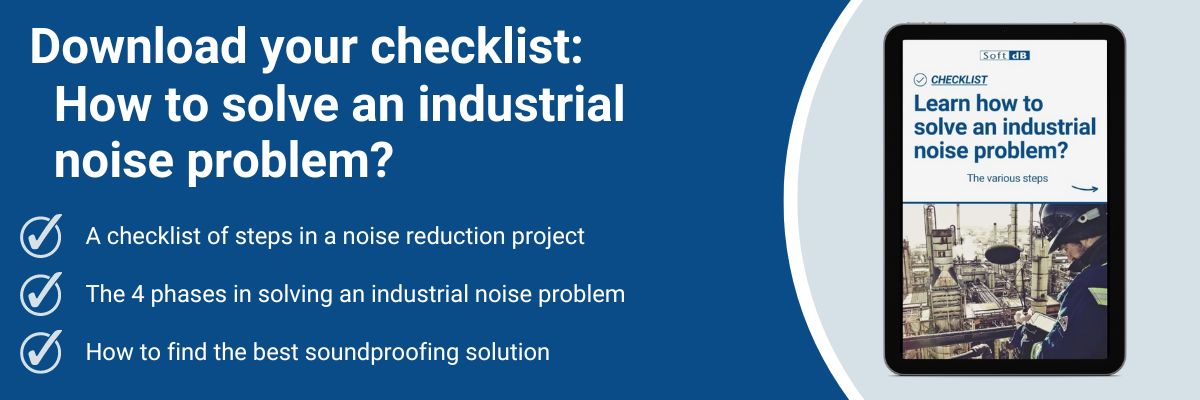
What is industrial noise pollution?
Industrial noise pollution refers to excessive and disruptive noise created by industrial activities, which has detrimental effects on the environment, human health, and overall quality of life. The term "pollution" in this context is crucial because it underscores the negative impact of noise on various aspects of our environment, including the natural environment and human well-being.
By incorporating the term "pollution," we emphasize that industrial noise is not ordinary or harmless sound but rather a form of environmental contamination that disrupts the normal acoustic balance. The use of the term "pollution" highlights the fact that this noise is an undesirable byproduct of industrialization, akin to other forms of pollution, such as air pollution or water pollution.

The relevance of the term "pollution" in this context can be understood in several ways:
Impact on the Environment
It underscores the idea that industrial noise is not just a minor inconvenience but a form of environmental harm that disrupts the natural soundscapes and can have adverse effects on ecosystems and wildlife.
Health Implications
By labeling noise as "pollution," we emphasize the risks it poses to human health, including stress, hearing disorders, sleep disturbances, and other adverse health effects, much like other forms of pollution can harm human health.
Regulatory Considerations
The term "pollution" draws attention to the need for adopting regulations and measures to control and mitigate industrial noise, much in the same way regulations are established to address other forms of pollution, highlighting the societal need to manage this issue.
Raising Public Awareness
The term "pollution" helps raise awareness about the significance of managing industrial noise. It encourages individuals, communities, and industries to recognize the issue, take responsibility for their noise emissions, and work collectively to reduce negative impacts.
Essentially, the term "pollution" in the context of industrial noise highlights the serious consequences of excessive noise from industrial activities, underscoring the need to understand, prevent, and mitigate noise to create a healthier and more harmonious environment for both nature and humans.
The World Health Organization (WHO) and regulatory bodies worldwide have established guidelines regarding acceptable noise levels in workplaces to protect the hearing health of workers.
In industrial environments, noise levels often exceed 85 decibels (dB), which is considered the threshold for potential hearing damage after prolonged exposure. For instance, a typical construction site can reach sound levels of 90 to 100 dB, while certain manufacturing processes can exceed 110 dB. These noise levels can lead to irreversible hearing loss and other health issues for workers exposed to them without adequate protection.
What Are Examples of Industrial Noise?
In the evolution of modern industry, noise emerges as a prominent player, expressing the vigor and vitality of various industrial activities. This collection of sounds, known as industrial noise, emanates from a range of sources within factories, construction sites, manufacturing plants, and other industrial domains.
These sources create a diverse auditory palette, encompassing the clatter of machinery, the resonance of engines, and the echoes of construction. As we delve into the realm of industrial noises, we encounter a array of examples that illustrate the audible signatures of industrial progress. From the rhythmic hum of production lines to the percussive beats of construction machinery, these examples provide insights into the diverse and often intricate auditory landscapes of the industrial world.
Here Are Some Examples of Industrial Noises:

Machine Noise
The operation of machinery and heavy equipment in factories, construction sites, and manufacturing plants can generate significant noise. This includes, for example, the sounds of impact in metallurgy workshops, the hum of conveyor belts, and the pounding of hammers on construction sites.
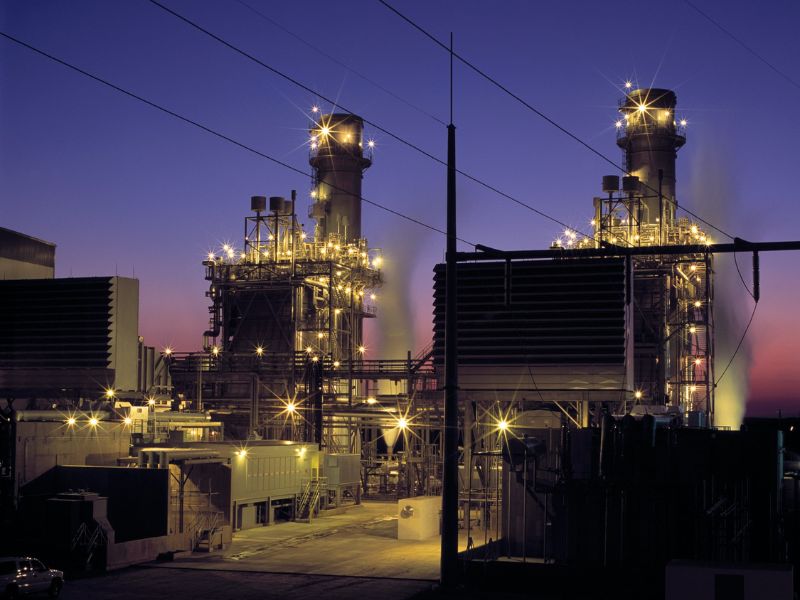
Power Plant Noise
Energy production facilities, whether using fossil fuels or renewable sources, generate noise from turbines, generators, cooling systems, and exhaust mechanisms.
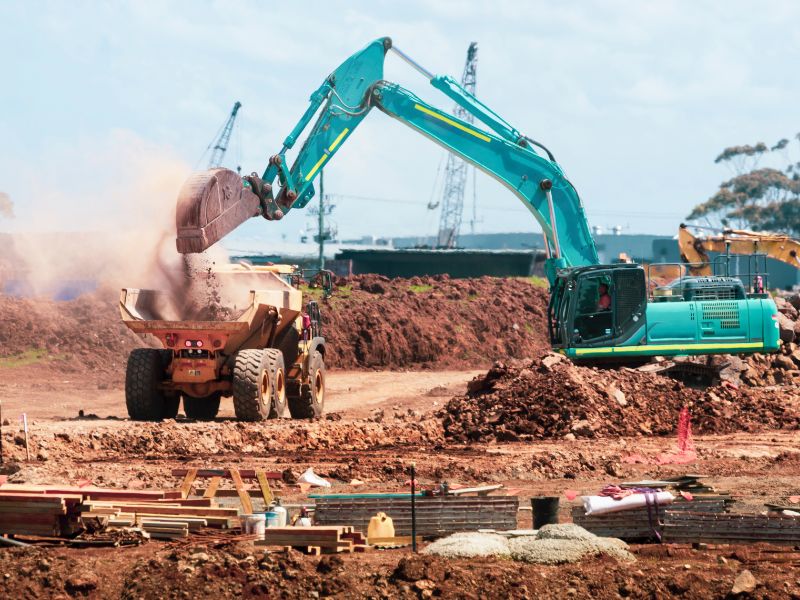
Construction Activities
Construction sites are known for their noise resulting from industrial activities such as drilling, hammering, and the use of heavy construction equipment.

Transportation Hubs
Airports, maritime ports, and railway marshalling yards are sources of industrial noise due to the movement of airplanes, ships, trains, and ground vehicles.
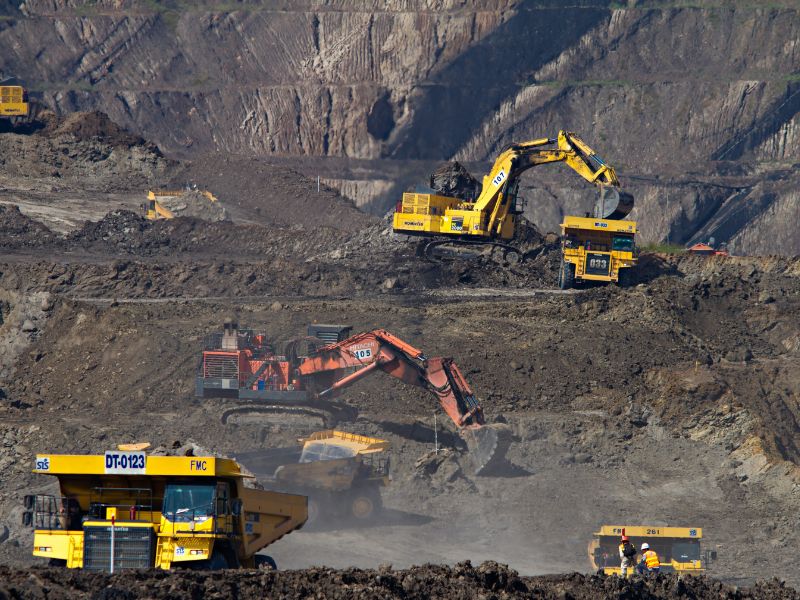
Mines and Quarries
Mining and quarrying operations involve drilling, blasting, crushing/screening, and transportation, which can create loud noises in nearby residential areas.

Manufacturing Processes
Industries such as chemical processing, cement production, and metal smelting involve complex processes that produce noise as a byproduct.
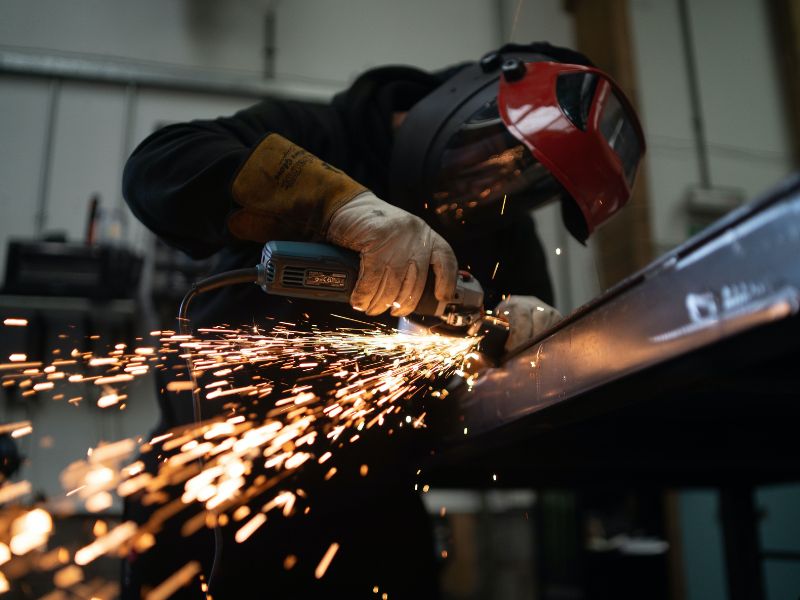
Metal Manufacturing
Activities like welding, grinding, and metal cutting can generate high levels of noise in metal manufacturing workshops.

Textile Production
Textile factories equipped with spinning machines, looms, and dyeing processes contribute to industrial noise.
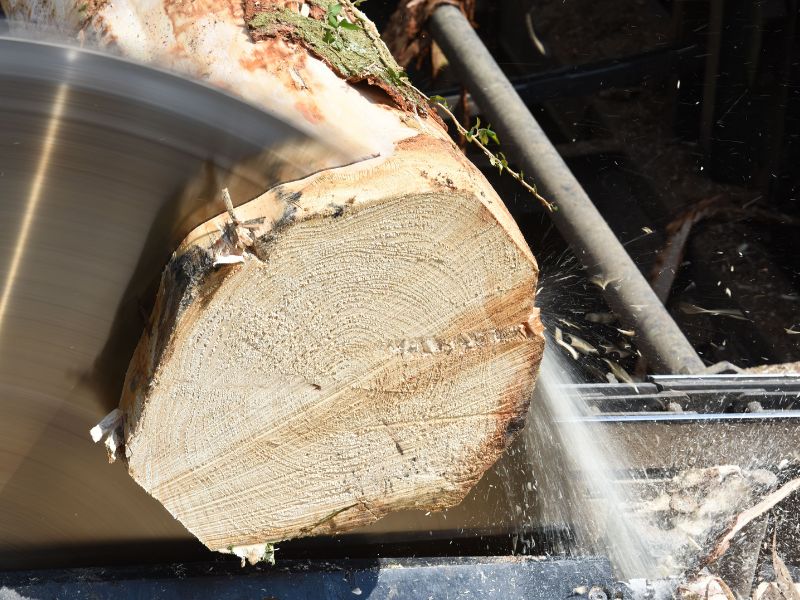
Wood Processing
Sawmills and wood processing facilities generate noise through activities such as sawing, planing, and other woodworking processes.
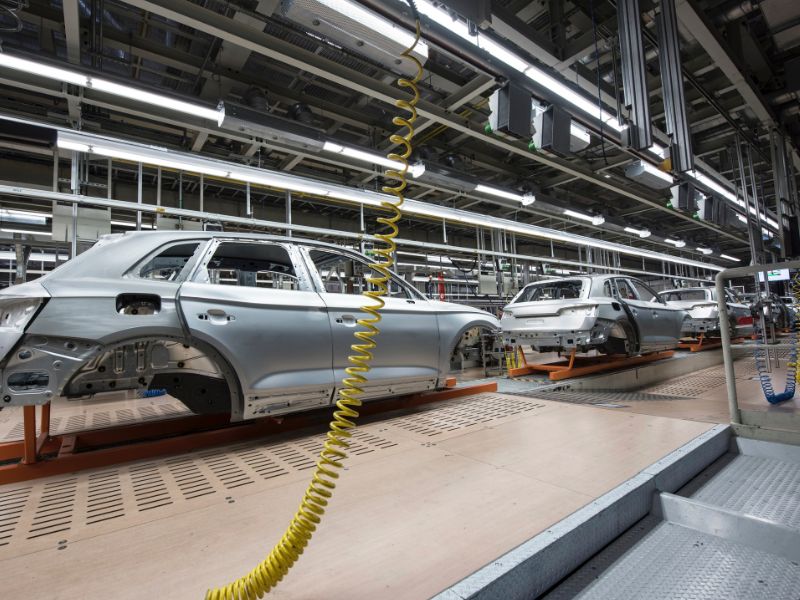
Automotive Industry
Car manufacturing plants have assembly lines with various machines and equipment that generate noise during the production of vehicles.
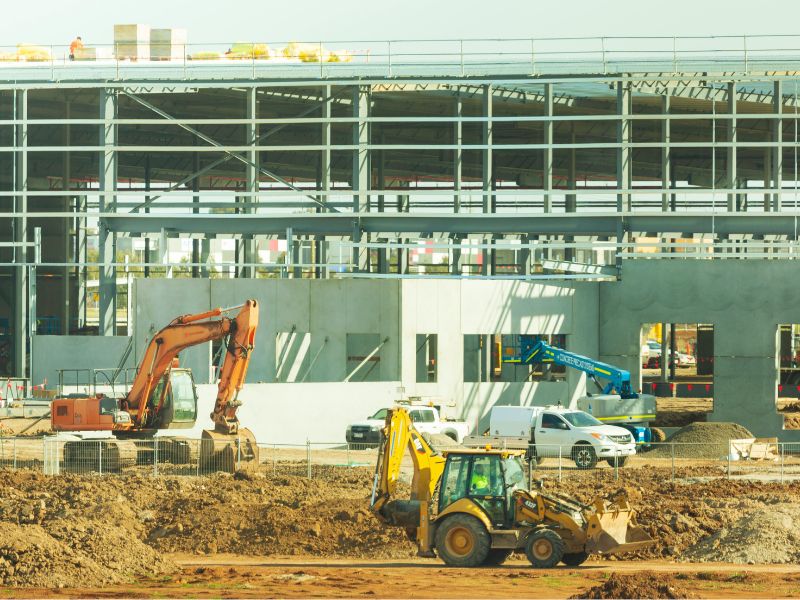
Construction Equipment
The operation of heavy construction equipment such as bulldozers, excavators, and cranes contributes to noise on construction sites.
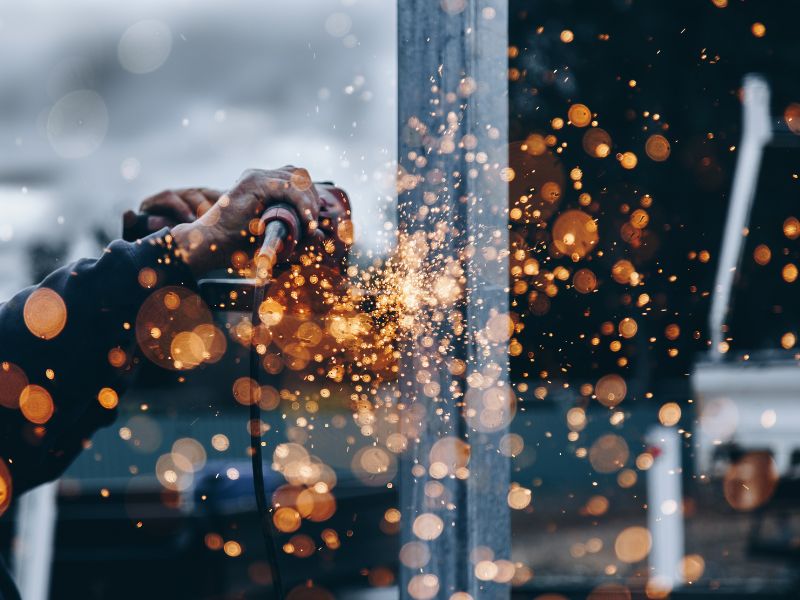
Metal Foundry
Foundries that produce cast metal parts often generate noise due to furnaces, molds, and the pouring of metal.
What Are the 4 Types of Industrial Noise?
The four types of industrial noise are as follows:
Airborne Noise: This type of noise propagates through the air in the form of sound waves. It includes sounds generated by machinery, equipment, and operations in industrial facilities. Examples include the hum of engines, the clatter of metal, and the buzzing of conveyor belts.
Structure-Borne Noise: Structure-borne noise occurs when vibrations from machinery and equipment are transmitted through solid structures such as floors, walls, and ceilings. These vibrations can propagate as sound waves on the other side of the structure, creating noise. For example, the dull noise of heavy machinery on the floor of a factory can generate vibrations that result in structural noise.
Fluid-Borne Noise: Fluid-borne noise is caused by vibrations that propagate through liquids or gases. In industrial contexts, this can result from the movement of fluids in pipes and ducts, leading to vibrations that produce noise. Examples include the gurgling of liquids and the hissing of gases in pipes.
Elasticity Noise: Elasticity noise is a type of noise resulting from the deformation or movement of materials under the influence of mechanical stresses. In industrial environments, elasticity noise can be observed when materials expand, contract, or undergo other changes in response to temperature fluctuations or operational stresses.
These four types of industrial noise encompass the various ways in which noise is generated and propagated in industrial settings. Understanding these types of noise is crucial for identifying sources, predicting noise transmission, and implementing effective noise control measures in industrial environments.
What Are Common Industrial Noise Levels?
In the field of industrial noise, noise levels can vary significantly depending on the sources, processes, and equipment involved.
However, here are some common industrial noise levels typically found in various environments:
Quiet Office: 35-50 decibels (dB)
This noise level is similar to that of a quiet office environment. It can be found in control rooms or administrative areas within industrial facilities.
Normal Conversation: 60-70 dB
Sound level of a normal conversation. Industrial sites where machine noise is minimal may experience noise levels like this during breaks or in offices.
Light Manufacturing: 70-85 dB
Factories engaged in light manufacturing processes, such as electronic device assembly or food product packaging, may produce noise in this range due to equipment and machinery.
Heavy Industry: 80-115 dB
Heavy manufacturing industries like metallurgy or automobile assembly can generate noise at these levels due to the operation of large machinery and manufacturing processes.
Construction Site: 90-110 dB
Construction sites are known for their noisy environment, with equipment such as jackhammers, bulldozers, and cranes generating noise in this range.
Power Tools: 100-110 dB
Various power tools used in manufacturing and construction, such as circular saws, pneumatic drills, and grinders, produce noise levels in this range.
Metal Fabrication: 100-115 dB
Metal fabrication workshops, including metal welding and cutting, can experience noise levels in this range due to processes involving machinery and metalworking.
Airports: 120-140 dB
Airplanes taking off and landing at airports generate noise in this range, impacting not only airport workers but also nearby communities.
Heavy Construction Equipment: 110-130 dB
The noise from heavy construction equipment like pile drivers, excavators, and concrete pumps can reach these levels, especially during intensive construction activities.
It's important to recognize that exposure to noise levels exceeding 85 dB for extended periods can potentially lead to hearing damage. Protective measures, such as Personal Protective Equipment (PPE) like earplugs or noise-canceling headphones, equipment soundproofing, and proper machine maintenance, are essential to mitigate the adverse effects of industrial noise on workers and nearby communities.
Negative Effects of Industrial Noise Pollution
The negative effects of industrial noise pollution are substantial and impact various aspects of human life and the environment.
Effects on Workers' Health: Workers exposed to high and prolonged noise levels are at risk of developing hearing disorders, stress-related issues, and decreased productivity. Chronic exposure to industrial noise can lead to permanent hearing loss and other long-term health problems. According to the WHO, more than 16% of adults worldwide suffer from hearing loss due to workplace noise exposure.
Impacts on the Health of Nearby Communities : Beyond the workplace, neighboring communities can experience disruptions in their daily lives. Chronic exposure to industrial noise can lead to annoyance, sleep disturbances, and a decreased quality of life for individuals living near industrial facilities.
Environmental Disruptions: Industrial noise can also disrupt wildlife and ecosystems. It affects animal communication, migration patterns, and reproductive behaviors, ultimately impacting biodiversity in affected areas.
How to Prevent Industrial Noise and Protect Workers:
To prevent industrial noise and protect workers, comprehensive measures must be implemented. Employers should prioritize technical controls to reduce noise at the source. This may involve using quieter machinery and equipment, introducing noise reduction technologies such as acoustic covers, acoustic barrier, and isolating noisy areas.
It is also essential to implement administrative controls, such as limiting workers' exposure time and rotating them to less noisy tasks. Proper training and education on the risks of noise exposure and the use of Personal Protective Equipment (PPE) such as earplugs or earmuffs are crucial for preserving workers' hearing health.
The implementation of preventive measures begins with a thorough noise assessment. This assessment involves measuring noise levels in different areas of the industrial facility. The data collected helps identify the primary sources and noise levels, allowing employers to implement appropriate industrial noise control strategies.
Regular maintenance and inspections of machinery and equipment are essential to ensure they operate at optimal noise levels.
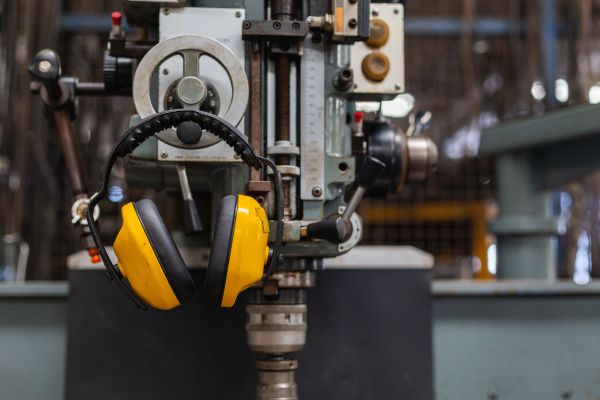
Implementation of Noise Control Measures:
The control of industrial noise involves the use of various strategies to reduce sound emissions.
These strategies can be categorized into technical and administrative controls:
Noise Reduction Studies: These measures aim to reduce industrial noise at the source, along the transmission path between equipment and workers, or at the receiver (worker). An effective approach is the use of acoustic blankets. Installing isolators and vibration dampers can minimize the transmission of solid-borne noise and vibrations through structural elements.
Administrative Measures: Administrative measures complement technical controls and aim to reduce workers' exposure to high noise levels. This may involve establishing work schedules that limit exposure time to noisy areas, creating quiet rest zones, and implementing a hearing conservation program. Regular training and education on the importance of noise protection and the proper use of hearing protection devices are also crucial.
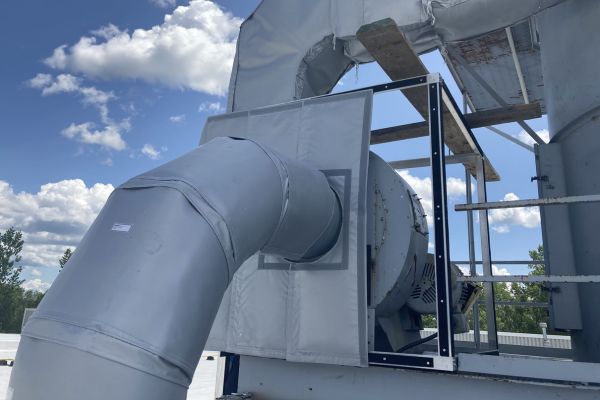
Treating Industrial Noise Sources at the Source:
Treating industrial noise sources at the source is one of the most effective ways to control noise pollution. Manufacturers are increasingly integrating noise reduction technologies into the design of their equipment and machinery.
Optimizing industrial processes can lead to quieter operations and overall improved efficiency. By investing in quieter technologies, regularly upgrading their equipment, and soundproofing their machines with acoustic enclosure, industries can proactively address noise pollution issues.
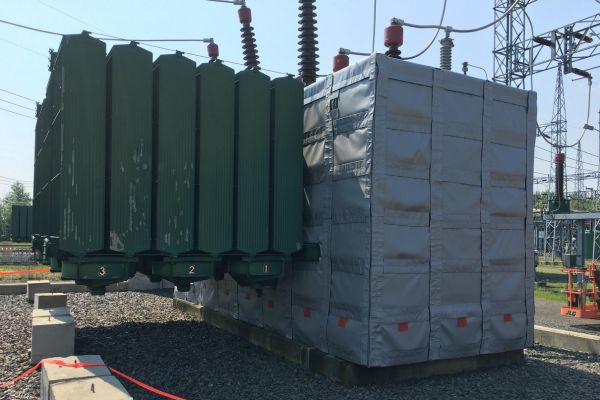
Mastering industrial noise from your equipment and machines: a solution of noise pollution
Do you want to see for yourself a solution that will help you control industrial noise?
Don't miss this short video!
A Few Questions About Industrial Noise
What Are the Three Types of Industrial Noise?

The three common types of industrial noises are:
Continuous Noise: Originating from machines or processes operating continuously, this type of noise can have consistent effects on the auditory health of workers.
Impulsive Noise: Generated by sudden events like explosions, this noise can be particularly harmful due to its abrupt nature and high levels.
Intermittent Noise: Characterized by periods of sound activity alternating with periods of relative silence, this type of noise can have variable effects on auditory health and worker well-being.
What Are the Noise Exposure Limits in Canada?

The noise exposure limits in Canada vary from province to province according to regulations. Here is a table summarizing the different industrial noise limits by province in Canada:
| Jurisdiction (federal, provincial, territorial) |
Continuous Noise (*) | Impulse / Impact Noise (*) |
|---|---|---|
| Maximum Permitted Exposure Level for 8 Hours: dB(A) |
Maximum Peak Pressure Level dB(peak) |
|
| Canada (Federal) | 87 | - |
| British Columbia | 85 | 140 |
| Alberta | 85 | - |
| Saskatchewan (*) | 85 | - |
| Manitoba | 85 | - |
| Ontario(*) | 85 | - |
| Quebec | 85 | 140 |
| New Brunswick | 85 | 140 |
| Nova Scotia (*) | 85 | 140 |
| Prince Edward Island | 85 | - |
| Newfoundland and Labrador (*) | 85 | 140 |
| Northwest Territories (*) | 85 | 140 |
| Nunavut (*) | 85 | 140 |
| Yukon Territories | 85 | 140 |
(*) Further information is available on the website of the Canadian Centre for Occupational Health and Safety.
What Is an Example of Occupational Noise?

An example of occupational noise could be the deafening sound emitted by production machines in a factory, such as metal presses, industrial saws, or cutting machines.
These consistently high noise levels, prevalent in many industrial settings, can pose risks to the auditory health of workers if not mitigated by appropriate industrial soundproofing measures.
What Is an Example of Industrial Noise?

An example of industrial noise could be the constant rumbling produced by an automated production line in a factory, encompassing the sound of machines, conveyors, and operational industrial equipment.
These high sound levels, typical of industrial environments, underscore the need to implement industrial soundproofing solutions to prevent risks to the auditory health of workers and minimize impacts on the overall sound environment of the factory.
What Type of Noise Poses the Highest Risk of Hearing Loss?

Impulse noise, often associated with sudden events such as explosions or industrial machines producing abrupt and loud sounds, is generally the most at risk of causing hearing loss.
This type of noise, due to its intense and brief nature, can significantly damage the hair cells in the inner ear, thereby increasing the risk of permanent hearing loss. It is, therefore, essential to take preventive measures, such as source industrial soundproofing or the use of hearing protection, in environments where this type of noise is prevalent.
Industrial Noise Must Be Controlled
Industrial noise pollution poses a significant challenge to worker health, community well-being, and environmental sustainability. However, it is possible to mitigate the adverse effects of industrial noise by implementing effective noise control measures and adequately protecting workers. By prioritizing noise reduction at the source and employing technical and administrative controls, industries can create safer and healthier working environments while contributing to a quieter and more sustainable world.
Contact Our Experts to Reduce Industrial Noise